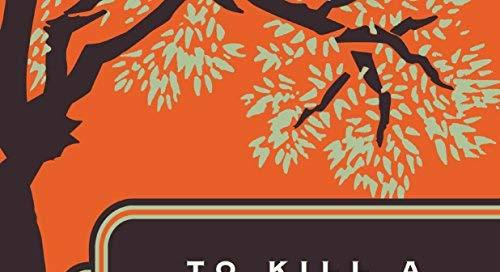This is a small-town family story set in Jim Crow Alabama. We follow the Finch family, headed by young widower and town lawyer Atticus Finch (presumably a public-defender) and his two children: son Jem Finch and younger daughter Jean-Louise “Scout” Finch. They have a black housekeeper named Calpurnia, and later Atticus’ sister Alexandra moves in to be a role model for Scout. It’s the late 1930s; the world seems menacing, dark, and illogical.
It’s Scout who tells us the story of how her father is required to represent Tom Robinson, a black defendant accused of raping a 19-year old white girl. We sit in the gallery and watch the trial through the eyes of a schoolgirl who has a keen understanding of the procedures, but not the underlying racism that blinds the jurors to the obvious facts that should exonerate Robinson.
Scout also introduces us to a quirky kid-next-door, Dill Harris, who stays with his aunt Rachel each Summer and returns to Meridian, Mississippi each Fall. Dill, a troubled kid with inattentive parents, is a bad influence on both Jem and Scout. He goads them into childhood pranks and challenges them to face their fears of Boo Radley, a neighborhood recluse who the kids imbue with sinister legends. Later, when a childish love affair develops between Dill and Scout, the two promise to marry. They spend at least one night cuddled together in a bed. But Dill is dismissive of Scout and participates in boyish activities that shut her out. I’ve read that Dill was modeled after a childhood memory of Truman Capote, who Harper Lee befriended when he moved to her hometown after his parents divorced.
With little effort, one registers loads of symbolism in this book, e.g., the nickname “Scout.” Any Google search of To Kill A Mockingbird will bring up loads of scholars discussing clever literary messages that Lee supposedly wove into her anti-hate story. I’m not saying she wasn’t conscious of some of these, but I suspect she didn’t dwell on them before putting pen to paper. I also detected a few plot-points as being a tad under-developed, as if Lee had planned to write a sequel. Not having done so, those plot points dangle.
I’m not going to discuss the ending because I don’t want to spoil it. This was my first reading; it's possible you haven't gotten to enjoy this American classic yet either. Do read it soon. It’s a remarkable book.
I wish I had read the ending more slowly, lingering over each sentence. I understood it, but the final scene contains some important clueing. Don’t rush to the finish, even if your heart is racing.
The pacing is terrific, and the first-person voice is remarkably modern. Scene descriptions squarely place you into the claustrophobic humidity of a small southern town. Lee has a reporter’s instinct. She tells what she observes, but not how to think about it. She is a genius at choosing what to show us. Then she allows the reader to form their own conclusions. “Showing, not telling.” This method of story-telling is powerfully effective. To Kill A Mockingbird does something more. Scout introduces us to what she witnesses, a “what” that strips her of her prelapsarian virtue, her childhood naivité, and moves her into a limiting, sexist, racist, violent adult world.
2025 is the perfect year to read or re-read this five-star classic. Sissy Spacek reads the audiobook edition from 2014.
“You never really understand a person until you consider things from his
point of view...until you climb into his skin and walk around in it.”
--Harper Lee, To Kill A Mockingbird





In 1971, my freshman year of high school, To Kill a Mockingbird, was required reading. Growing up in a small northwestern Ohio town, where there were only white families and one Hispanic family, the book made me aware of injustice and racism. Thank you for the review!